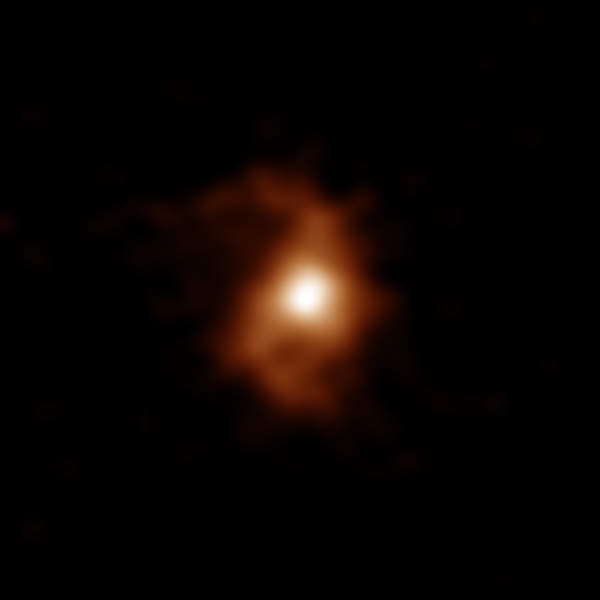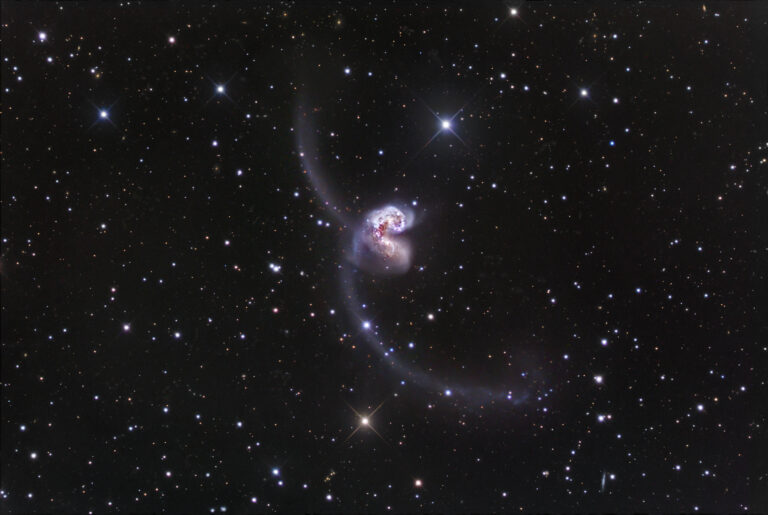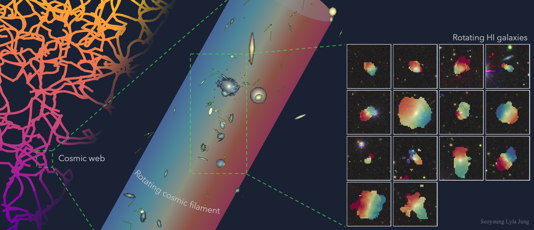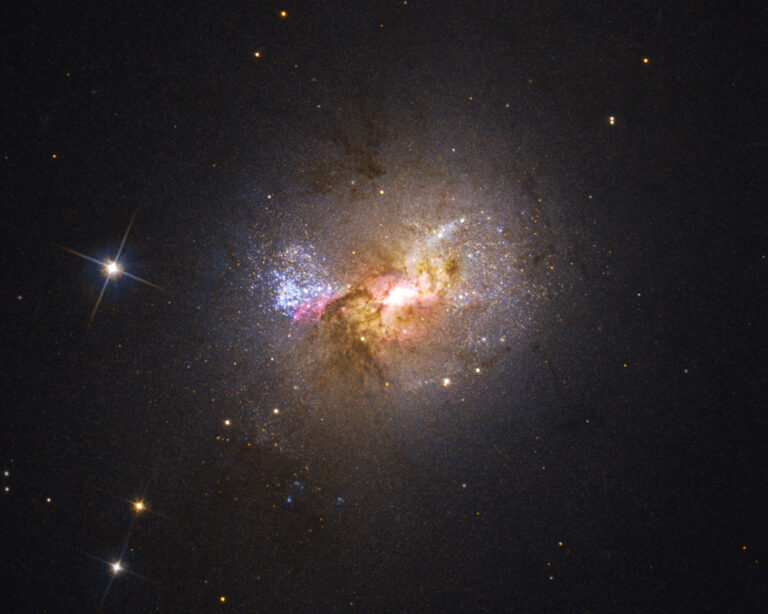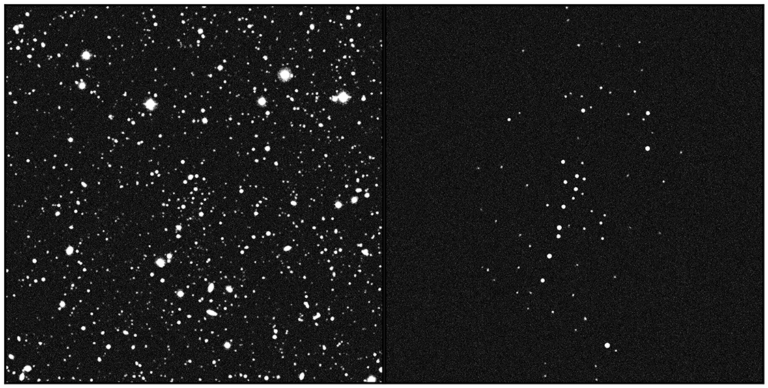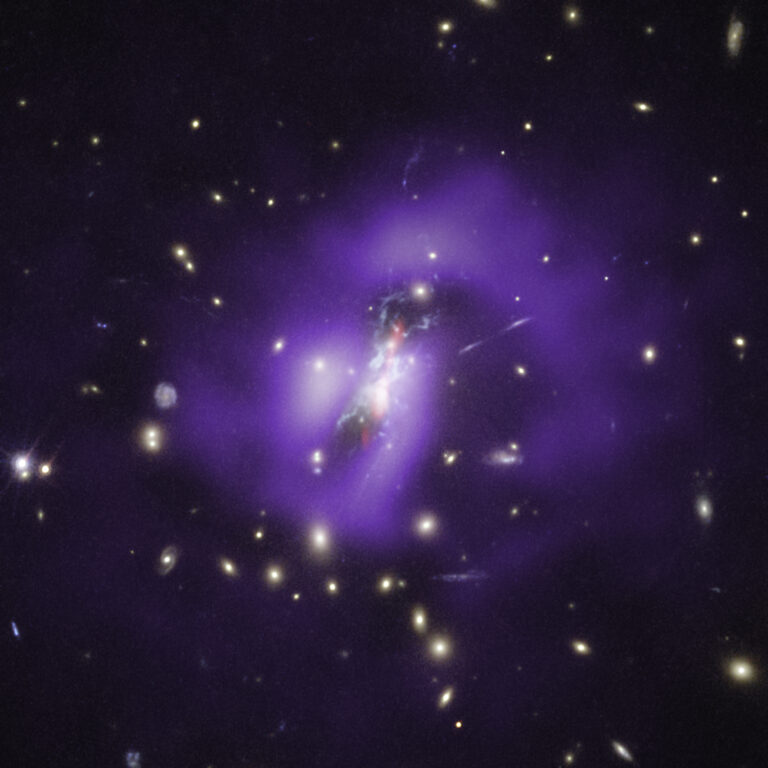Key Takeaways:
The curling, wispy arms in this image might belong to the earliest spiral galaxy yet discovered. The graceful galaxy is seen as it existed just 1.4 billion years after the Big Bang. That’s over a billion years older than the previous record holder for a spiral galaxy.
This ancient specimen was discovered by Takfumi Tsukui and Satoru Iguchi at the Sokendai university in Tokyo using the Atacama Large Millimetre/submillimetre Array (ALMA) radio telescope in Chile.
The galaxy, called BRI 1335-0417, appears to display a central bulge, a rotating gas disk, and spiral arms. Based on analysis of the galaxy’s spectra, it’s also pumping out newborn stars at a prodigious rate — 5,000 Suns’ worth per year. This makes it a so-called starburst galaxy.
The above traits are all hallmarks of a young spiral galaxy entering its prime. Spiral arms are thought to be the result of waves of star formation that spread through a young galaxy’s disk. But scientists had never before seen this kind of developed spiral structure when the universe was still so young, well before the cosmos as a whole reached its peak rate of star formation.
There is a small chance, however, that the galaxy’s 10,000-light-year-long appendages may not be spiral arms in the traditional sense. Instead, they could be tidal tails, or streams of stars that were dislodged and flung outward during a gravitational interaction with a passing galaxy. But, the authors of the new study say, tidal tails are typically larger and less tightly wound around a galaxy’s rotating disk than the arms of BRI 1335-0417 are observed to be.

